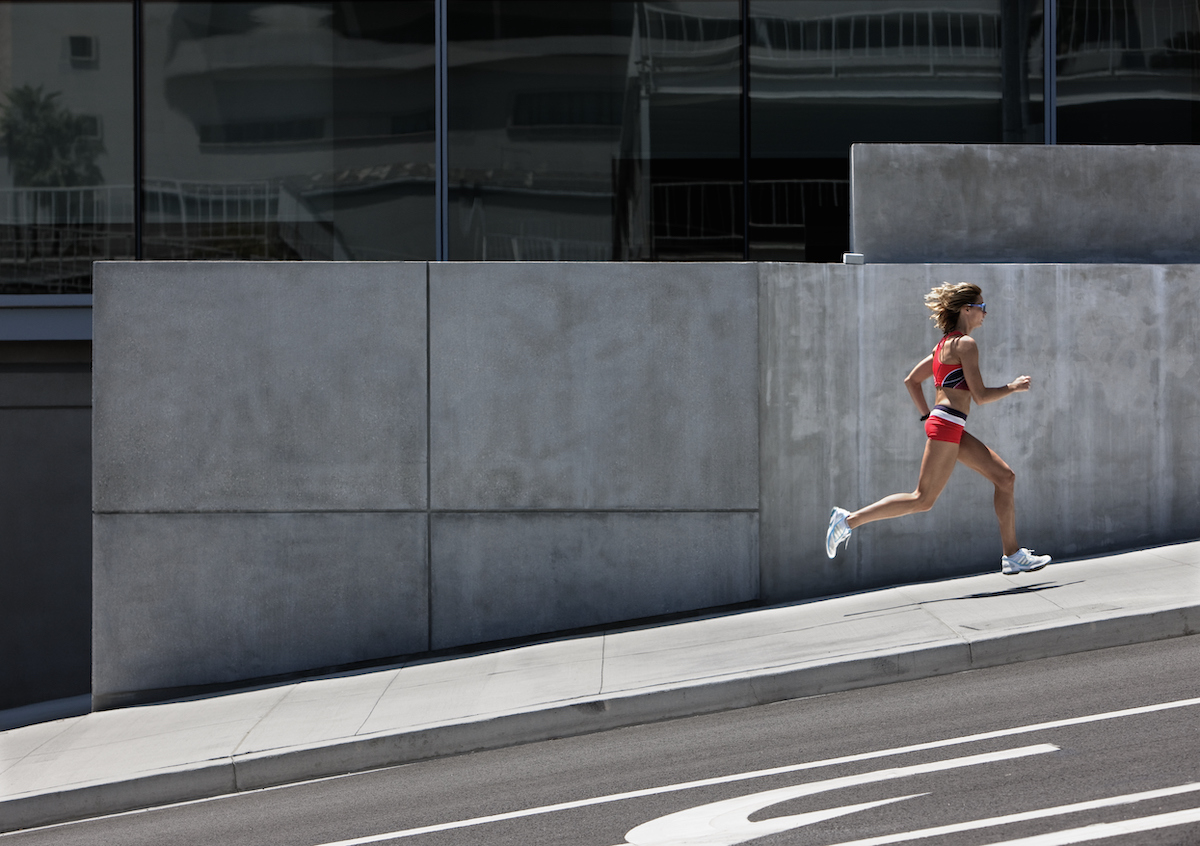30 speedwork sessions that will improve your run pace
Ignore speedwork at your peril, says Paul Larkins. By mixing up your run pace, your overall run performance will come on in leaps and bounds

Ignore speedwork at your peril, says Paul Larkins. By mixing up your run pace, your overall run performance will come on in leaps and bounds…
For some triathletes, the word ‘speed’ invokes a similar reaction as to when you hear your granny swear – it’s something that makes you wince, so you do your best to block it out.
As a result, training consists of simply lacing up your shoes and heading out of the door for yet another one-paced effort.
Of course, that certainly has a role to play in any training programme – it’s refreshing, good for general aerobic fitness and, for a while, it can even result in improvement.
For instance, if you’ve been off for a while or have just started, easy miles in the bank will be just what the doctor ordered. But keeping everything at the same speed will quickly see any improvement plateau, before declining to a dead-end.
Alternating patterns
The key is not to think that speed involves emulating Usain Bolt, but rather running at a different pace to your usual run.
In actual fact, a good proportion of a speed session will actually mean running slower than normal – as long as you include the faster bits as well. So what we’re talking about here is alternating fast and slow efforts.
To get the most out of a speed session, you need to evaluate your own running and create workouts accordingly. The examples that follow will cover that, but remember: speed can take on a whole host of different guises.
A young triathlete aiming to run no more than a few kilometres might regard 8 x 200m with 90secs rest as a tough endurance session; an Ironman hopeful might be looking at 10 miles very slow followed by 10 miles at race pace to create a similar effect.
When and where
Where is simple: anywhere! You don’t need exact distances, nor do you need special venues. Ten x 400m on the track is a perfectly acceptable workout for an Olympic-distance event. But then so is 10 x 75secs on the road or 10 x 68secs in the park…
All will provide the same physiological response. The most important thing to consider is how often you should include speedwork.
If you were simply running and not doing any other sports, then two speed efforts a week would work perfectly.
But given the time needed for recovery, as well as the other two disciplines and life in general, a rough rule to work to would be one workout every six running sessions. So that might mean you throttle down and change pace every 10 days or so.
Jargon buster
Intervals
A set recovery period between efforts. Decrease the recovery for endurance; increase it for speed. For example, 10 x 400m with 30secs rest is good for endurance; 10 x 400m with 4mins rest will be much quicker.
Tempo
Around three miles is the best distance for runs at this speed (about 85%). A good rule is to be able to finish and say, “I could run 10 miles at the same speed if I had to!”
The speedwork sessions
Build raw speed

This is an important element to consider. You may not be training to be a sprinter, but developing a sprinter’s style, and the muscles employed, will help you train better in the workouts that are more beneficial for you.
Unlike ‘professional’ runners, you might look to do this in the autumn or early winter, which works great as a transition back into training. Remember to stay relaxed in all of these workouts; fast sprinting is about relaxed power.
1. Increasing-distance sprints: 80m, 90m, 100m, 110m, 120m, 130m, 140m, 150m, 160m, 170m, 180m, 190m, 200m (or 6, 8, 10, 12, 14, 16, 18, 20, 22, 24, 26, 28, 30secs). Walk back to the start line for recovery. Aim to run relaxed for each run at about 80% of your max. Think ‘form’.
2. Easy run of about five miles followed by 6 x 100m (6 x 15secs). Walk recovery.
3. 6-9 x 30secs (or 6-9 x 200m), running easy for one and two, then hard for the third effort. Repeat this pattern. Your efforts should each be about 80, 80 and 95% of max, respectively. Walk recovery between efforts (4mins).
4. 9 x 100m (or 15secs), running the first three hard for 30m, then back off for 30m, then accelerate to the line. Next three easy for 30m, hard for 30m, then easy (about 85%). Last three easy, hard, harder. Walk recovery.
5. 6 x 150m (25secs), with 3mins recovery, running quite fast (about 90%).
Build 10km power

The core workouts for most triathletes, these sessions will develop speed endurance allowing you to maintain a high speed for much longer.
6. Fartlek (running slow then fast) always results in great improvements. For those who haven’t used them, they’re unstructured sessions. For example, on a seven-mile run, warm up for a couple of miles, then run hard for a minute, before jogging until you see someone walking a dog, then run fast until you see a letter box, and so on. Be as free and easy as you like, or be structured and include 6 x 30secs, 4 x 1min and 1 x 5mins.
7. The standard 10 x 400m (or 70secs) is a very good session. As you get fitter, change the recoveries on an ad hoc basis. For example, start off taking 1min for all 10. As you progress, change to 1min after the first, then 30secs after the second, then 90secs, then 45secs and so on.
8. 5 x 1km with 90secs rest. Run the efforts at 5km race-pace speed.
9. 15 x 300m with 90secs rest.
10. 12 laps of a 400m circuit (or in a three-mile run), alternate hard 100m (90%) with easier 100m (80%). When fit, it’s possible to run close to your three-mile best doing this.
11. 1 x 600m (2mins); 2 x 500m (1:40mins); 3 x 400m (75secs); 4 x 300m (1min); 5 x 200m (30secs). As recovery, jog the same distance you ran for each effort.
12. Three sets of 10 x 200m (or 30secs) with 30secs recovery; 3mins recovery between sets.
13. Three sets of 4 x 400m (or 45secs) with 45secs recovery; 3mins recovery between sets.
14. Pyramid: 1 x 400m (70secs); 1 x 600m (2mins); 1 x 800m (2:30mins); 1 x 1,000m (3.15mins); jog 200m and then back down again. For example, 800m, 600m, 400m.
15. Three-mile tempo (about 2-3mins slower than your race speed), followed by 4-6 x 1min hard with 90secs rest. This is how a triathlon will feel – running hard for a sustained period, before thinking about picking it up for the final two miles.
Build endurance

Learn to maintain a high speed in these workouts and running at long-distance race pace will become easier.
16. 3-5 x 1 mile with 60secs rest. Think about running 10-mile pace for each mile.
17. Easy out, hard back: run out for up to 10 miles at about 2mins per mile slower than usual, turn around and run back as hard as you can.
18. In a 10-mile run include 2 x 10min efforts, aiming to run the second effort quicker; 5mins rest.
19. In a 10-mile run, go easy for three miles, steady ‘normal’ speed for three and race pace for the final three. Cool down for one mile.
20. 3 x 1 mile with 2mins rest, then 1 x 800m as hard as you can.
21. 5 x 2km with 2mins rest; each 2km must be 10secs faster than the last so choose the speed of the first one wisely.
22. Run three miles hard (tempo), then 4 x 1min with 1min rest, then another three miles hard.
23. Warm up, then 2 x 3 miles, running the second three miles 15secs faster than the first; 4mins recovery.
24. Five miles in the morning; race in the evening.
25. 25 x 400m (70secs) with 100m jog recovery (45secs).
Build strength

Hills are a great ‘natural’ strengthener, as well as helping you to concentrate more on your running form.
26. Short and sharp and not-too-steep hills (8 x 150m0 with a walk recovery the day after a long run – a great way to remind your body how to run fast without stressing it.
27. 8 x 1km up a shallow incline; jog-down recovery.
28. Run fast on the flat for about 15secs, then accelerate up a steep hill for 10secs; walk recovery. Repeat eight times.
29. On an 8-10mile run, accelerate to flat out up every hill (works on long bike rides as well).
30. 4 x long hills (about 600m); walk recovery. Aim for a fast, hard pace.




